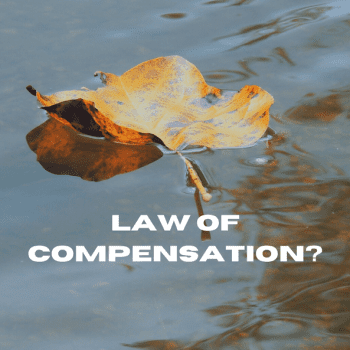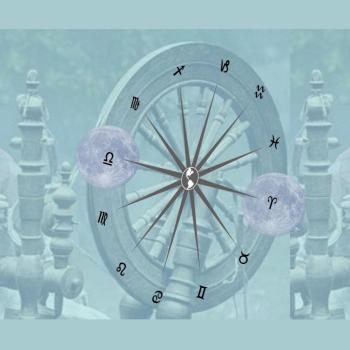Modern legal and psychological experts will tell you that dangerous “cults” don’t necessarily have to be religious. However, there are obvious cult-like attributes common among those groups that have tragically harmed their members. I’d like to discuss those red-flag behaviors, and offer suggestions on how to avoid them creeping into our covens.
A Baneful Cult or a Beneficial Coven?
Let’s start with the Oxford Living Dictionary definition:
Cult:
(1) a system of
religiousveneration and devotion directed toward a particular figure or object.
(2) a relatively small group of people havingreligiousbeliefs or practices regarded by others as strange or sinister.
(3) a misplaced or excessive admiration for a particular person or thing.
Experts use this word “cult” to describe the infamous groups that criminally exploited and harmed their members, and they all have common attributes and behaviors. The most infamous example is the Jonestown Massacre, where 918 people drank the “cyanide Kool-aid” served by the deranged Reverend Jim Jones and died; 304 of them were children.
Because covens tend to be “a relatively small group of people having religious beliefs or practices regarded by others as strange or sinister,” it behooves us to be mindful of the danger signs we learned from these tragedies. Because Witches are self-regulating and often operating quietly under the radar, the potential for exploitation of our love and trust, is sadly quite possible.
Common Attributes of Baneful Cults
Stephen Johnson in his article How to Identify a Dangerous Cult, lists the following commonalities. Much of this information comes to us from the legal work of cult expert Paul Morantz, a lawyer who specializes in cult and brainwashing cases. I’ve also collated some tips from Fr. Dwight Longenecker who wrote this piece on cult-like behavior in Catholic parishes.
Embed from Getty Images
Cults are formed around an adoration for a strong, charismatic leaders who typically exhibit:
- Narcissistic Personality Disorder
- They are control-freaks
- Have an ability to read people and identify those who are easily manipulated
- Claim to have special powers that no one else has, are smarter, more pure, more holy than the others.
- “Mercurial” behavior that swings from benevolent to abusive so alarmingly that it keeps their members off balance and fearful.

Cult Leaders brainwash their members with common techniques:
- Isolation: Separating members from friends and family. Outside groups are identified as “the enemy,” whereas members are “the faithful.” There will be no efforts made to build bridges through inter-faith work, fortress-building is more common.
- Peer Pressure: They offer safety and acceptance, by pressuring adherence to the cult’s social norms.
- Confession: They encourage detailed confessions of former sins, then use that information as black-mail to control members, or through shame or guilt to keep them oppressed.
- Control: The cult dictates what work they do and when; what they eat and when; how much they sleep and when; who they have sex with, when and how; how they spend their money, etc. This systematic relinquishing of all choices creates dependency on the group, and the inability to question the status quo.
- Sleep Deprivation: “As Chuck Dederich, the leader of the Synanon rehab cult, described it: ‘If you keep people awake long enough, you can make them believe anything.'”
- Language Control: Using special jargon in place of common words or abstract ideas furthers isolation, because it makes it harder to discuss their ideology with outsiders.
- Fear Tactics and the Persecution Complex: First they demonize the outside world as a dangerous place, and outside people as evil, and then project blame for all their problems on those demonized outsiders.
- Threats of Expulsion: They can then control members compliance by threatening to banish them to that demonized world.
Embed from Getty Images
Cults Leaders don’t like it when you ask probing questions:
- How do they react when you ask the skeptical probing questions? If they don’t give a clear answer, reverting to catch-phrases and propaganda, it’s a red flag.
- If they react with anger or offense that you would dare question their absolute correctness, it’s a red flag.
- Cults demand absolute loyalty: Dissent or criticism is not permitted. Those who question the ideas or actions of the group are typically labeled as “unbelievers,” “doubters” and then marginalized. They may then be demonized – or worse – subjected to punishments for skepticism, to “correct” their thinking.
Cult Leaders tend to Sexually Exploit their Members:
- They take abusive sexual liberties with the members of their choice, isolating and grooming them for their sole pleasure, while demeaning other potential partners within the group – further exhibiting their dominance by denying any “competition” their sexual freedom.
- Pedophilia, forced marriage of underage-girls to much older men, normalizing of marital rape, control of women’s reproductive rights, and the business of sex trafficking, are rampant attributes of cults.
Embed from Getty Images
Cult Leaders Demand Unreasonable Financial Contributions:
- Typical of cult behavior is an expectation that members contribute all (or most) of their financial assets to the organization. The day of the Jim Jones Massacre, he signed over $7.3 Million in assets to the Communist Party of the Soviet Union, which he’d collected from his members.
- Meanwhile, the leader is considered worthy of being given these extra comforts and riches; however, the members must buy their worth in the group by giving up everything they have.
- Typical of cults who live communally, is a requirement to work long hours for the organization without a legal rate of pay (or any pay at all) all while enriching their leaders.
- Thus, they become completely dependent on the group for their survival. This financial control limits their ability to leave the cult.
Cult leaders conspire to cover up anything that would tarnish the “wonderful community image.”
- There is no transparency to faults of the leadership. Any problems in the group are hidden and denied.
- There are no other leaders, no real functioning board of trustees, just cronyism behind closed doors.
- There is no transparent method by which others can know what is going on, rise into leadership, or share in authority.
Sounds Familiar, yeah?
A lot of this sounds familiar, I’m sure. So much of what is happening in America right now smacks of cult-ish brain washing. I grew up in the Jim and Tammy Bakker “Praise the Lord” Evangelical Cult that operated out of South Carolina in the 80’s. I know how insidiously these abuses can creep up on otherwise trusting and faithful people.
Embed from Getty Images
Organizing a Beneficial Coven
Write a mission statement for the group. What are your shared goals? Why does this group exist? What purpose does this group mean to fulfill in the lives of the members?
Hint: It should be something other than “worship and mindlessly obey one charismatic person’s every whim.”
Here’s an example: “The ministry of (Coven Name) is dedicated to the Great Work of enlightenment as magickal practitioners. (Coven Name) works to facilitate responsible education and training in Modern Witchcraft. (Coven Name) serves as an affiliation of independent Witches seeking personal sovereignty through Divine Love. Our praxis serves to achieve a healthy life in harmony with nature, with respect and responsibility, harming none.”
Clearly define your organizational structure: Is this group egalitarian? Or do you favor a hierarchy with Lord and Lady Priest/ess in life-long authority? Be transparent about what folks are getting themselves into, and what level of participation they can expect.
Define the Leadership Positions, write job descriptions, requirements for holding that position, how you get the job, and expectations for their responsibilities and behavior while in power. Set term limits. I would be highly suspicious of any authority figure who could not share responsibility, or be willing to step-aside and allow new voices to take their turn at the helm eventually.
Define a Means for Hiving Off: If this is a training coven, there will be a yearly influx of new members. As they progress toward becoming priests, priestesses and teachers in their own right, there needs to be a culture of openness that someday they will wish to hive-off and run their own coven. That is how healthy covens work. Witchcraft works best in small groups of 5-20 max. Unless you like the “megachurch” model, find a means to encourage the peaceful release of members under new leadership. It is cult-ish not to allow folks to leave of their own free-will. If you don’t encourage the process, schisms will no doubt happen anyway, and that just brings undue witch drama.
Enforcement: Define what actions or behaviors aren’t OK, and outline methods by which violators would be asked to leave the organization. For our group, any violation of our Bill of Rights would be the no-no’s. (see below.)
Outline a grievance resolution system: give a concrete way to report issues; how an investigation will be carried out and by whom; provide mediation through which all parties can come to resolution.
Set fair and equal financial expectations: Covens have expenses for ritual materials, rent on halls or camp-grounds, that everyone should equally provide, but living expenses or salaries of any leadership would be damn near verboten. I’d be highly skeptical of any Priest/ess in a coven expecting any kind of salary, so that should be a big red-flag. I suggest a low flat fee that everyone in the group should have relative ease to kick-in. There will always be resentment on sliding-scale arrangements. When our our needs are greater than that budget, we hold fundraisers in the outer community.
We have a “finances” section of the charter that outlines what the money is for, transparency of financial records, how we vote for spending, etc. We also have a treasurer who manages the money, taking that out of the Ritual leadership hands. Everything moves through an official bank account in the group’s name.
Leadership Transparency: Hold business planning meetings that are open. Have someone publish minutes, and record the meeting and make that easily accessible – also helpful for an account of what is actually said in case of disputes. Be especially transparent when challenges come up. Perfect love and trust accepts that things will NOT always smell like roses – don’t hide the hard stuff. Lead by example how to deal well with conflict.
Define Guidelines for ethical conduct: Especially sexual conduct of your leaders – which I wrote about at length here. But also make sure to define your shared ideals, so that you can “strive ever towards them.” For example, not all groups adhere to the Wiccan Rede to “An it harm none do what ye will.“ So, make sure to state your guidelines clearly. If you do embrace the Rede, thoroughly discuss what “Harm” means to your group, as this is a subjective concept. We have Four Rules for Personal Sovereignty that we refer to often.
Embrace flexibility: Lest we fall to fundamentalism, accept that any charter or set of guidelines should be a living, evolving document that reflects the values of the current group members. We open everything up to scrutiny, discussion, and amendment every year from Samhain until Yule. At the same time we seek new nominations, and vote on the next year’s leadership council. Then we vow to uphold it come Imbolc.
Build Bridges: Participate as a group in larger pagan gatherings – compare stories and ideas, attend other types of public rituals to gain perspective. Get out of town and study under a variety of teachers and traditions. Participate in Interfaith Community work as you can, to combat isolationism and promote coexistence.
Create a Bill of Rights that protects all your members equally. I previously wrote about that at A Covener’s Bill of Rights, but for ease I’ll post our language here so you can see how we used this tool as a means to keep much of the above cult-ish red-flags from ever happening.
Basically, our Bill of Rights applies to everyone who is invited to come play on our witchy playground – from friends and family who attend our events, to our seekers, students, neophytes, and all coven members, through all levels of leadership.
A Covener’s Bill of Rights:
1. The right of inclusion:
The Coven offers equal opportunity in pursuit of membership to any legal adult without discrimination, regardless of race, ethnicity, national origin, spiritual path, gender expression, sexual orientation, or intersexes.
2. The right to personal sovereignty:
Participants will be treated as a sovereign beings with dignity and respect; participants will never be coerced to go against their own conscience, to commit illegal acts, to contribute beyond their means, to engage in any sexual or physical actions they do not condone, or to perform tasks beyond their physical abilities.
3. The right to confidentiality:
Participants have the right to keep their involvement in Witchcraft and The Coven private. Confidentiality of personal information will be maintained between seekers and mentors, barring any indication of injury or harm to self or others.
4. The right to freedom of expression:
Participants may freely express themselves in constructive ways, as long as it remains respectful, and upholds the right to confidentiality, harming none.
5. The right of access:
Participants have the right of access to the current Charter, and have a representative on the Leadership council who is available for mediation on their behalf.
6. The right to consistency:
The rules and requirements of this charter apply equally to all participants.
7. The right to participate in governance:
Participants may bring new business before any scheduled business meeting of the coven, by contacting a Leadership Council representative no less than forty-eight hours in advance, so that they may be added to the agenda. The Participant’s attendance is required to present their idea or concern.
8. The right to a peaceful separation:
Participants may discontinue association with the Coven at any time, and depart in peace, according to their own free will.
Here is an additional resource, called The Advanced Bonewits’ Cult Danger Evaluation Frame
Hopefully this discussion helps further our evolution in a beneficial direction. The more we are aware of the dangers of cult-like behavior, the better able we are to navigate clear of them.
Blessed Be,
~Heron
Keep reading for ideas on how to Cult-Proof Your Coven: Charter Template with Egalitarian Structures.


















